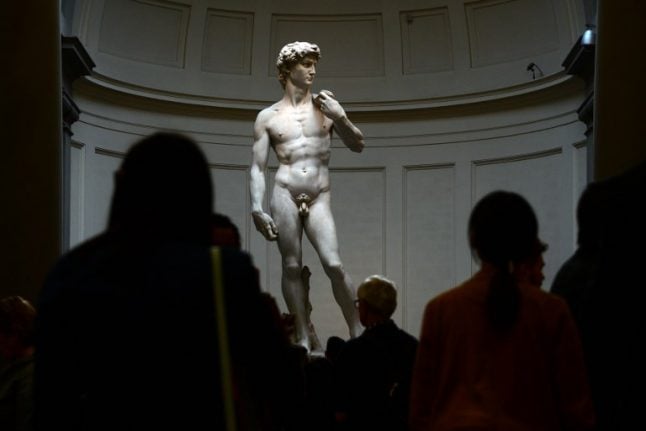Three years after he stripped off in front of Botticelli’s Venus and six months since he frolicked in the Trevi Fountain in Rome, a Spanish man once again surprised art lovers by posing nude in front of another Italian masterpiece: Michelangelo’s David.
The Spaniard, a “performer” named Adrián Pino Olivera, removed his clothes last Sunday and stood naked next to the monumental sculpture, which takes pride of place in Florence’s Galleria dell’Accademia.
He shouted “incomprehensible phrases” while a companion filmed him, Il Messaggero reported.
Security guards rushed to cover him and eventually escorted him out of the museum, which attracts thousands of visitors each day.
Police were asked to charge the exhibitionist with obscenity, given that his performance took place in a public place frequented by minors, but it’s not clear if any investigation is underway.
The museum’s director, Cecilie Hollberg, called the incident “sad and ridiculous”.
Olivera, however, calls it art.
His public nudity is part of “Project V”, his attempt to “transmit and claim the divine power of the Feminine in the face of the decline of the contemporary male world”, according to his website.
Each performance incorporates some sort of V sign for Venus, the Roman goddess of love.
Since his 2014 debut in front of Sandro Botticelli’s Birth of Venus at the Uffizi Gallery in Florence, Olivera has appeared nude in front of iconic artworks across Europe, including the Winged Victory of Samothrace in the Louvre in Paris, John Everett Millais’s Ophelia at London’s Tate Britain and The Nude Maja by Francisco Goya at the Museo del Prado in Madrid.
On April 22nd, he skinny-dipped in the Trevi Fountain in Rome while bemused tourists snapped photos.
We don’t know where he’ll strike next, but we do have a clue as to when: Olivera says he always chooses the 22nd day of the month for a performance, since V is the 22nd letter of the Roman alphabet.



 Please whitelist us to continue reading.
Please whitelist us to continue reading.